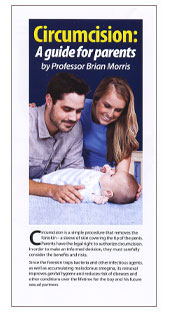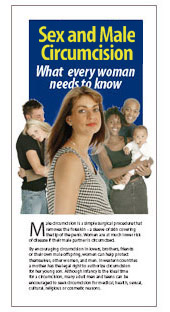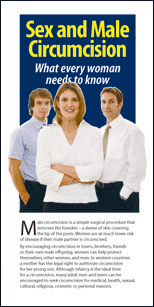CIRCUMCISION:
The Circumcision Debate
Historically circumcision has been a topic of emotive and often irrational debate. At least part of the reason is that a sex organ is involved. Another is that it concerns surgery on this part of the male anatomy. (Compare, for example, ear or body piercing, or tattooing.) Religion can also be a factor in some arguments.
In the USA circumcision has always been common amongst the majority Anglo-Celtic Whites and also amongst Afro-American Blacks. Australia similarly once conducted routine circumcision of all newborn boys. In both countries a down-turn took place after the mid-1970s, but is now rising again in each as the medical and health benefits are becoming better known.
The misinformation that produced the downtrend years ago is still embedded in the consciousness of some medical practitioners who hail from the 70s, and their protégés.
In fact there have even been reports of harassment by medical professionals (such as less well-informed midwives, nurses and doctors) of new mothers, especially those that can be more readily identified because they belong to religious groups that practice circumcision, in an attempt to stop them having this procedure carried out.
There has been a trend by pediatric bodies to skirt the truth in favor of what could be viewed as "New-Age political correctness", spurious "human rights" rhetoric, or perhaps fear of litigation stemming from the rare surgical mishap.
The policy statements of professional pediatric bodies have been misused by others as part of an “appeal to authority” fallacy [Govier, 1997], which is often used as a substitute for supplying an actual argument.
The bodies themselves also see a trend and copy it so that the statements of one of them can be seen to then trigger a “bandwagon” response. Those who write the policy statements are often physicians with little or no academic expertise. Not surprisingly, they have been criticized by academic experts, as discussed below.
From 2012 onwards affirmative, evidence-based policy statements began to emerge in the USA (see section “Position statements by national pediatric bodies).



